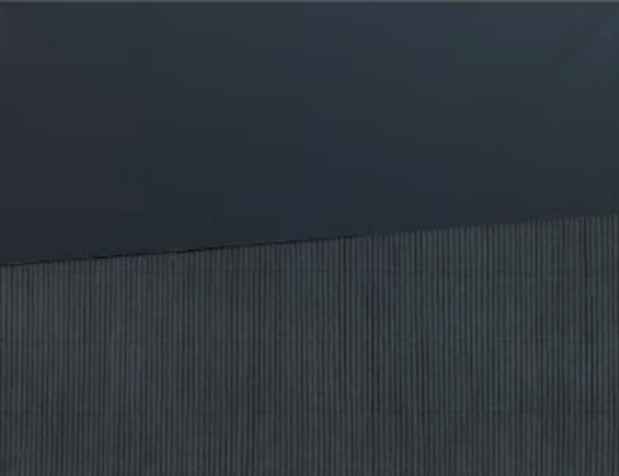Park Seo-Bo “Ecriture: Black and White”
Tina Kim Gallery

This event has ended.
“I want to reduce and reduce – to create pure emptiness.” – Park Seo-Bo (2006)
Tina Kim Gallery presents Ecriture: Black and White, a solo exhibition of paintings by Park Seo-Bo, one of Korea’s most acclaimed artists. As a founding member of Dansaekhwa and longtime professor at Korea’s most prestigious art school, Hong-Ik University in Seoul, Park Seo-Bo has influenced many generations of artists. The current exhibition will focus on Park’s paintings from the late 1990’s until the early 2000’s.
Born in 1931 under Japanese occupation, Park is known as one of Korea’s most significant early modernists as well as a vital interlocutor of Korea’s cultural history. In the 1950’s he was one of the first to introduce abstraction into what was then a very conservative art world, balancing tradition with the rising influence of the West. Park’s steadfast commitment to pushing boundaries and embracing new vocabularies of expression has consistently resulted in new and influential bodies of work widely heralded both in Korea and abroad.
First developed in 1967, Ecriture is an ongoing series of monochromes in which Park covers his canvas with a single color and manipulates the still-wet surface with repetitive, carving gestures—actions that resemble the writing of a script. While in earlier works he used a pencil or stylus to create these repetitive marks, beginning in the 1980s he introduced Hanji paper into the series, layering and scraping the pulp on the wet surface to create a unique sequence of sculptural lines that seem to float on top of the canvas. The resulting relief paintings stimulate the viewer’s perception, evoking architectural space and the phenomenology of seeing. Art historian Alexandra Munroe has characterized this work as embodying an “ecstatic minimalism.”

For Park, merging Eastern philosophical ideas with formal painting techniques is of the utmost importance. Inspired by Taoism and Buddhist practices of meditation, the artist’s practice fuses a highly refined material vocabulary and classical idioms rooted in calligraphy with the rigor of western Modernism in an attempt to capture and convey the ideal of emptiness or “no mind.” This concept of emptying the mind of preconceived ideas in order to channel a purer embodiment of creative energy is grounded in Park’s unique studio process in which he uses repetitive mark making to eliminate individual gestures. It is within this framework that Park successfully developed his Ecriture technique.
Showcasing black and white Ecriture paintings from the late 1990s to the early 2000s, Ecriture: Black and White at Tina Kim Gallery presents how Park’s pursuit of what he refers to as “holistic monochromes” evolved and came to fruition. For Park, the decision to explore a limited palette signals a mature late career body of work grounded in his commitment to further strip away any remnants of the “painterly.” This shift to the monochrome confronts fundamental questions of consciousness and being, reflecting Park’s own philosophy and reaction to modernism while also engaging the tradition of sumi ink painting. In this respect, the works on view in Ecriture: Black and White demonstrate Park’s earliest concerns as a leading figure of the Dansaekhwa movement, while also illustrating a unique, formal style and personal relationship to Korean art history. For this body of work, the artist restricts himself to the use of black and white color as he conveys his strong interest in Asian philosophy. The color black represents time, embodying material accretion and conveying pure emptiness, while white represents the elimination of color, thereby conveying the total integration of matter into the void.
Ecriture: Black and White provides an invaluable opportunity to experience the master works of an artist whose practice has consistently challenged the traditional definition of painting and helped open a new and vital chapter in the history of abstraction.
Born in Yecheon, Gyeongsangbuk-do, Park Seo-Bo graduated from the painting department of Hong-Ik University in Seoul in 1954. From 1962 to 1990 he was a beloved professor and later Director of the College of Fine Arts at Hong-Ik University; in 2000 he was named Emeritus and received an honorary doctorate. He has been widely celebrated throughout his career for championing Korean art, and was awarded the Artist of the Year prize from the Korean Fine Arts Association in 2008 and the Silver Crown Cultural Medal in Korea in 2011. His work has been exhibited internationally, including the Venice Biennale (2015, 1988), Samsung Museum of Art, Seoul (2014), Busan Museum of Art (2010), Portland Museum of Art, Oregon (2010), Singapore Art Museum (2008), Kunsthalle Wien, Vienna (2007), The Miyagi Museum of Art, Sendai (1993), Tate Liverpool (1992), Brooklyn Museum, New York (1981), and Expo ’67, Montreal (1967). His work is included in the collections of the Hirshhorn Museum and Sculpture Garden, Washington, Solomon R. Guggenheim Museum, New York, M+, Hong Kong, Guggenheim Abu Dhabi, UAE, The National Museum of Contemporary Art, Seoul, and the Museum of Contemporary Art, Tokyo, amongst others.
Media
Schedule
from November 11, 2016 to December 23, 2016
Opening Reception on 2016-11-11 from 18:00 to 20:00